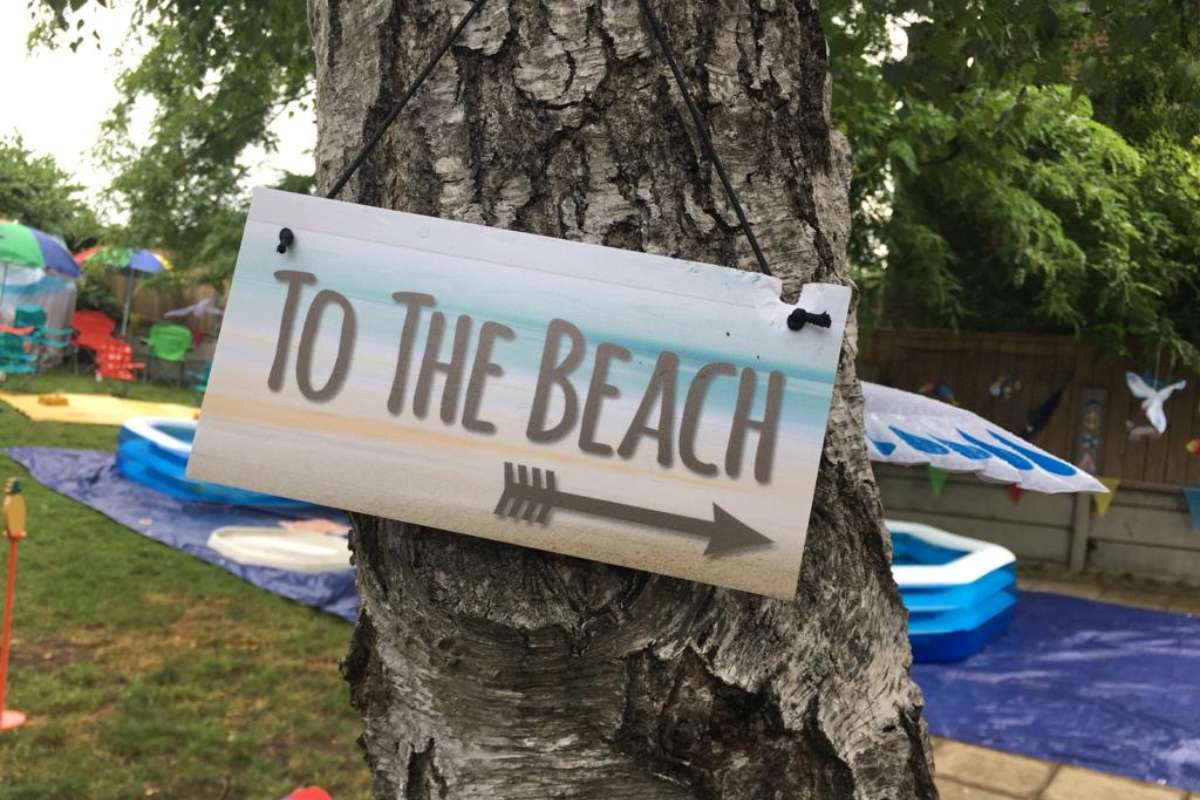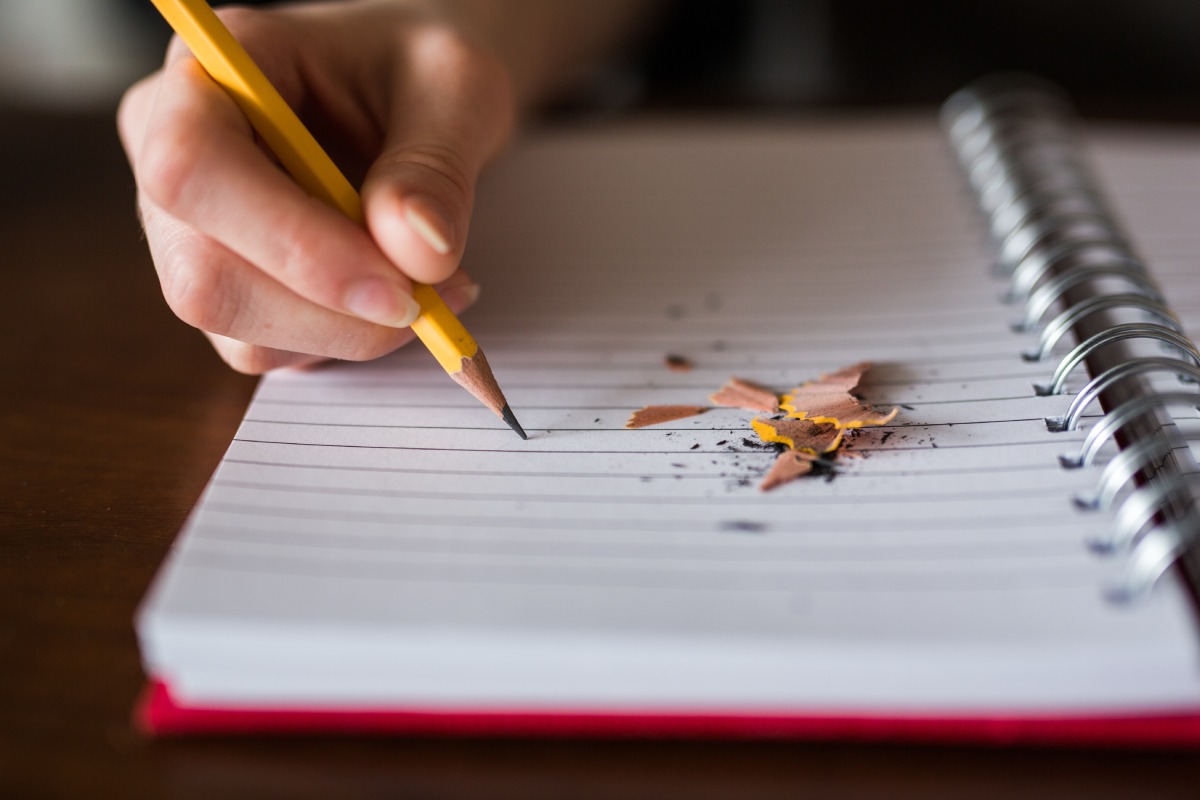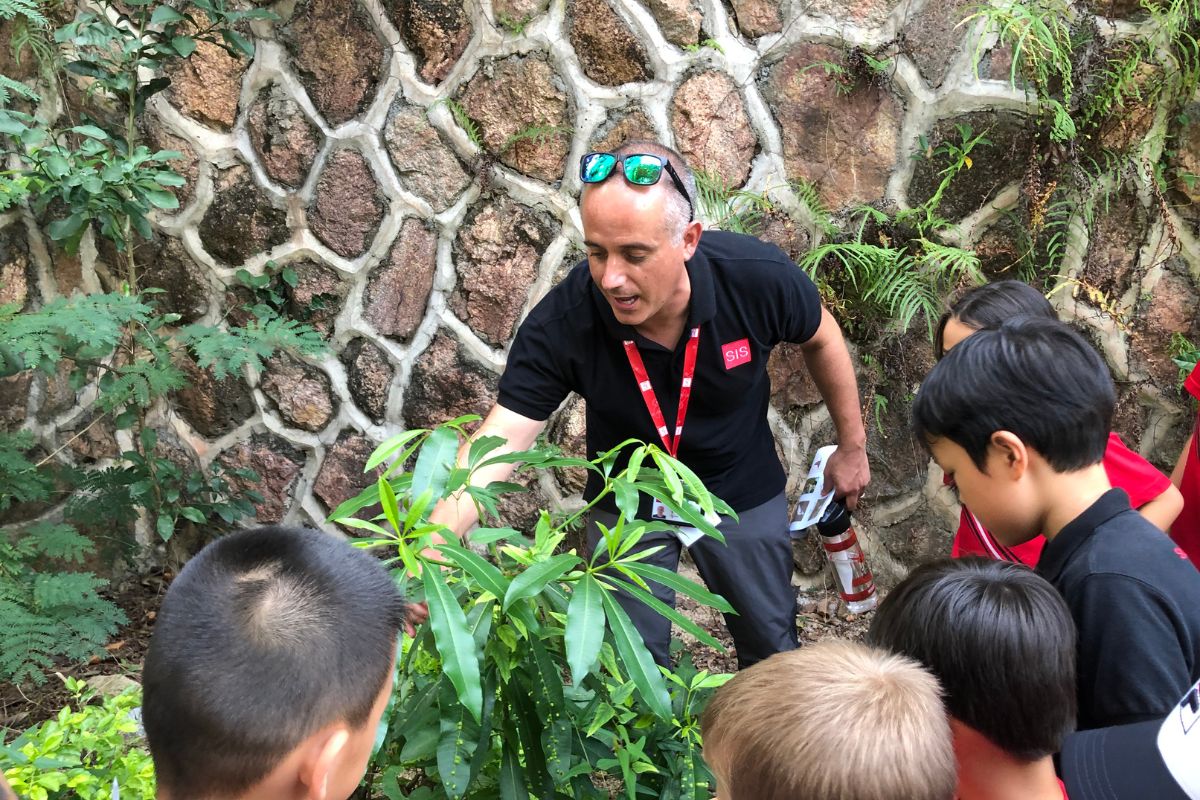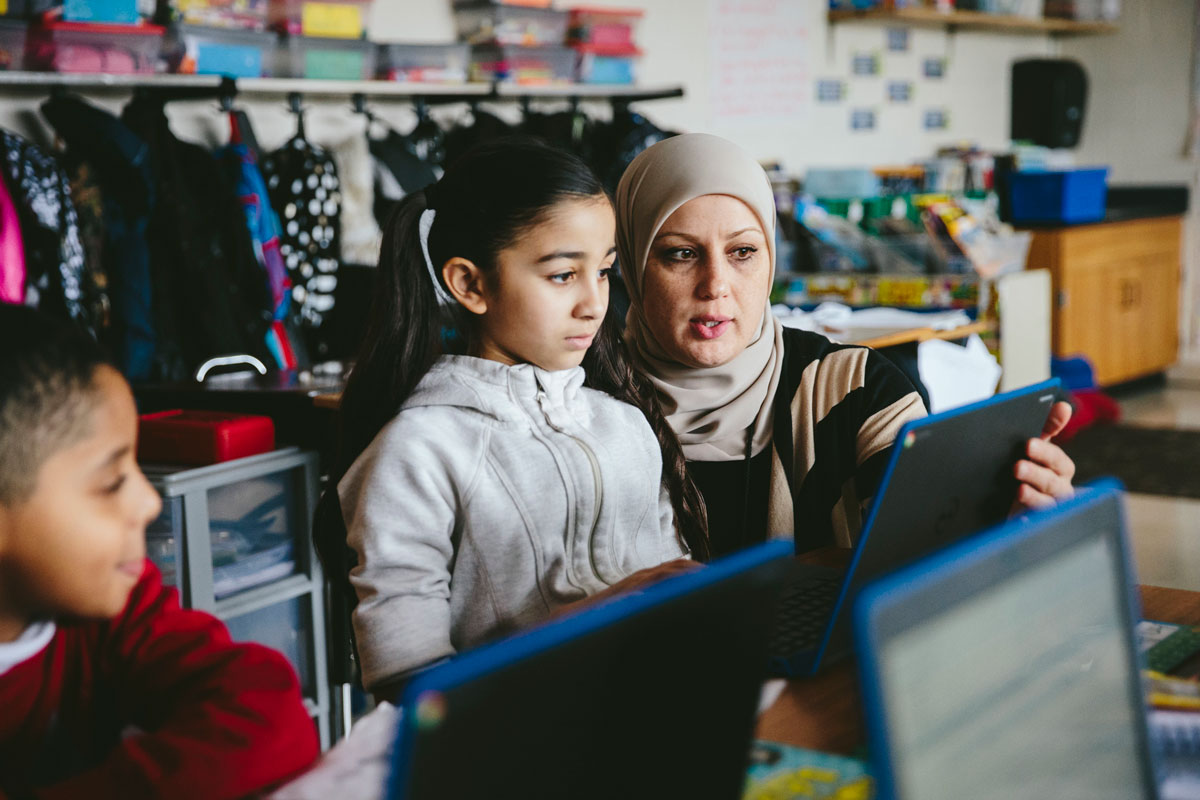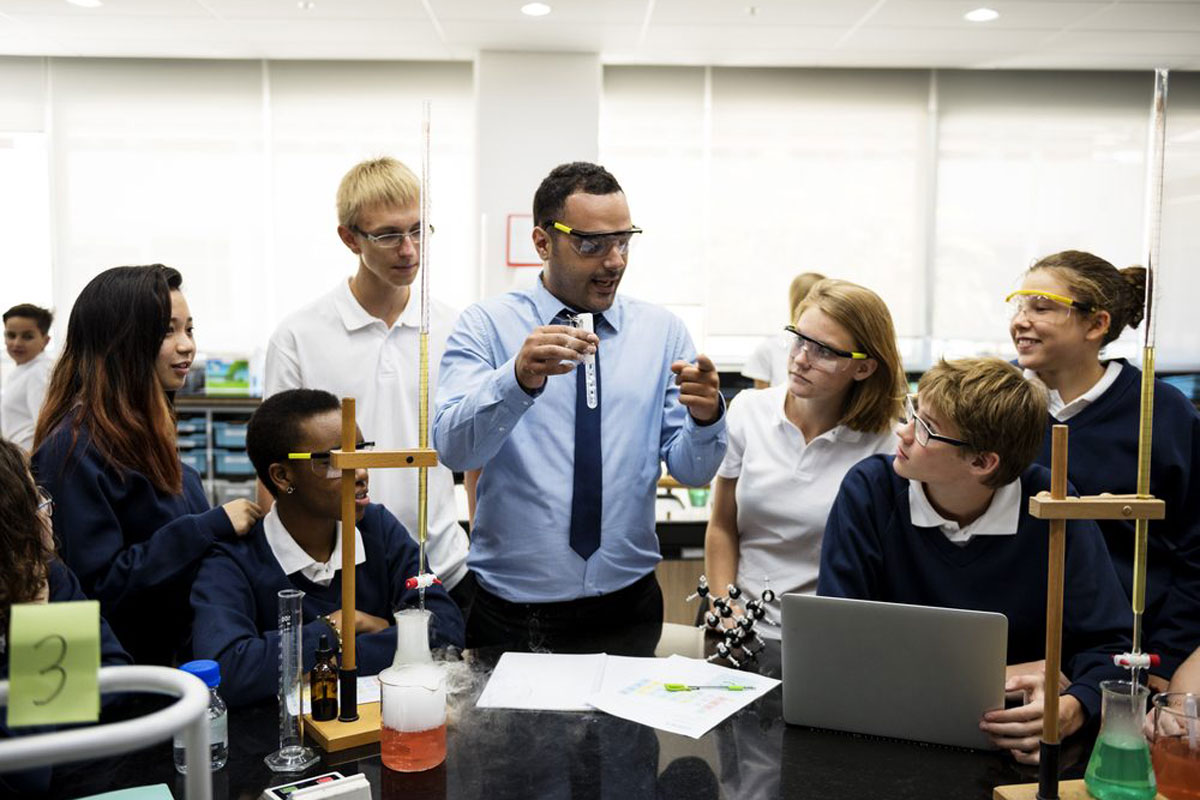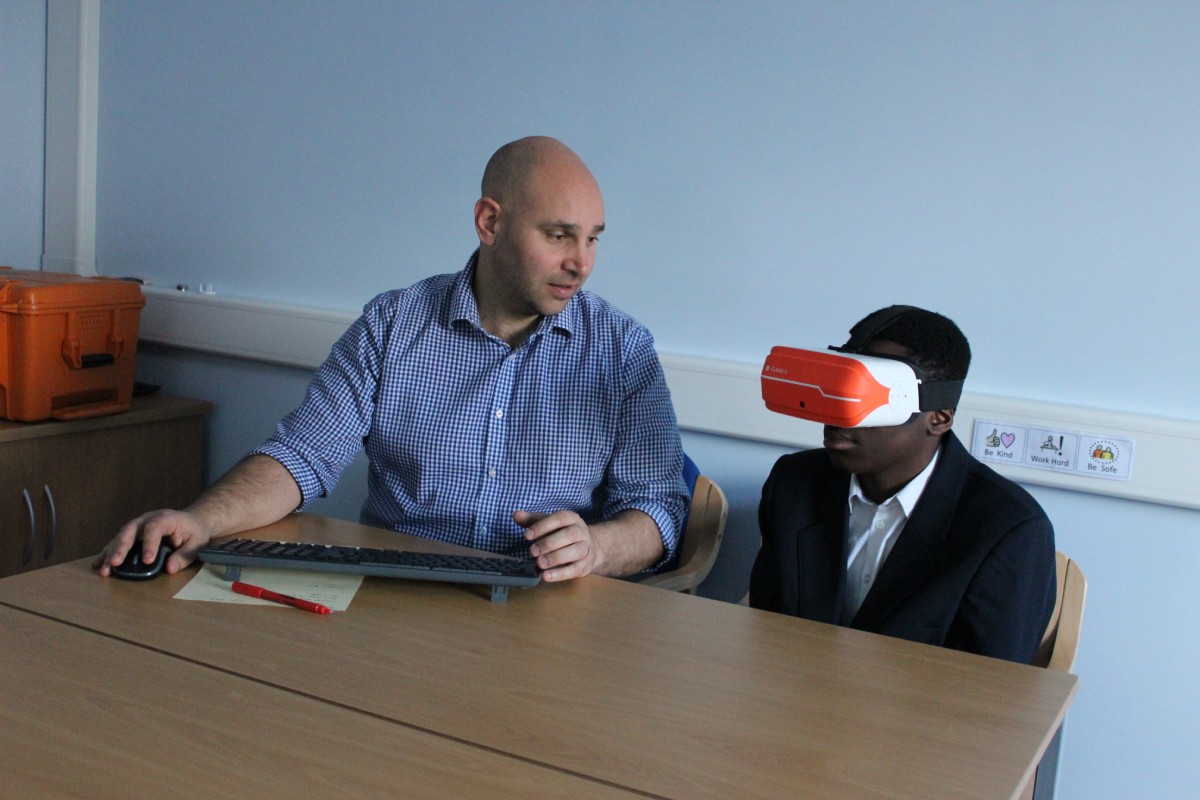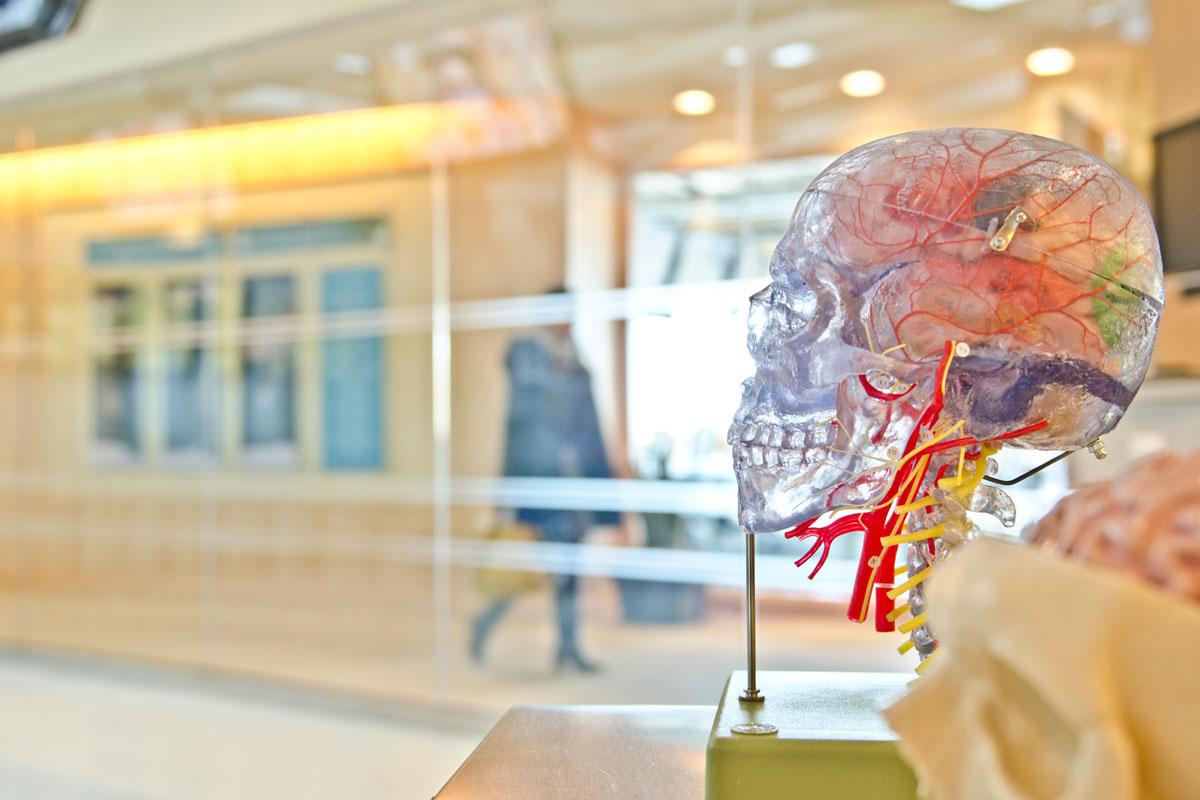Using Nature to Nurture: Rethinking Learning Environments to Encourage Inquiry, Play and Development
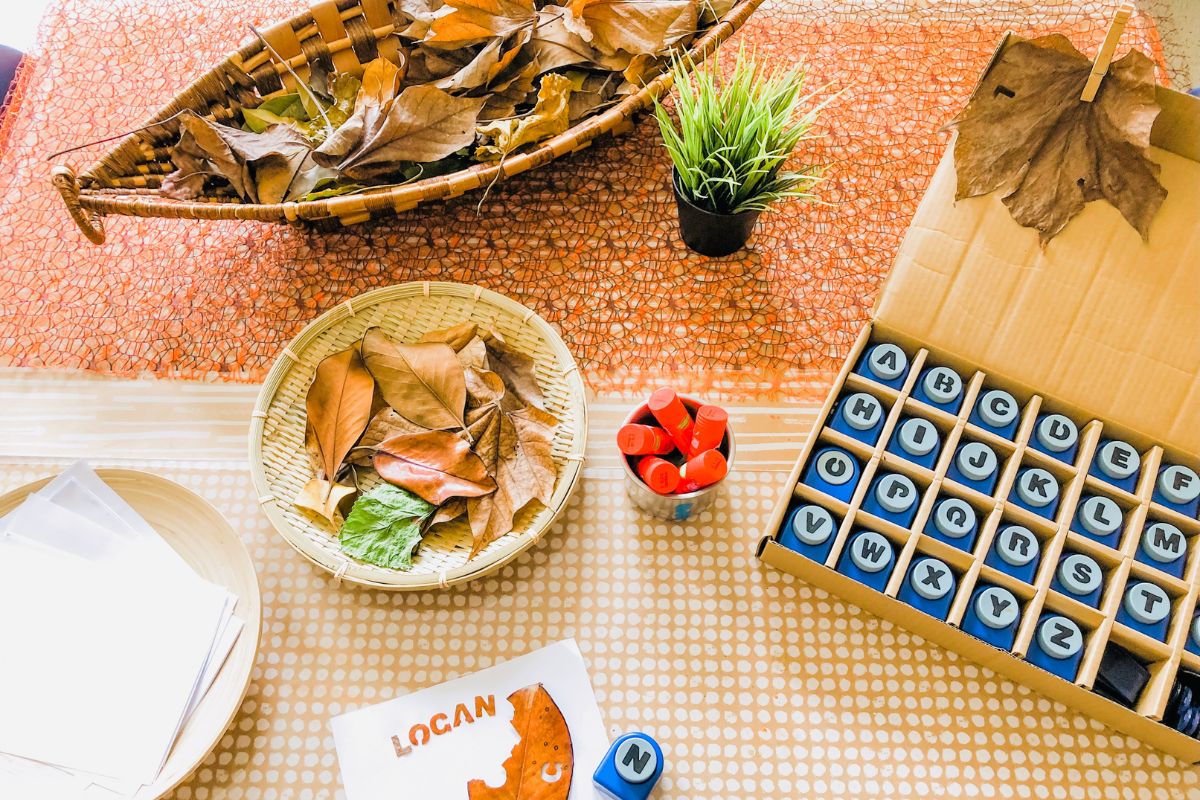
Why do we, as school educators, teach children information they can learn themselves? Children are natural, active learners, capable of constructing their own knowledge in a variety of contexts. Much like plants, they instinctively soak in the nutrients of life from the world around them, grow upwards and blossom into something wondrous. Their minds and bodies are constantly absorbing new information, observing, processing, evaluating and blooming.
Through inquiry and play-based approaches to learning, children can make meaning of the world around them, sometimes far better than any lesson plan could facilitate. As educators, we can work alongside children and respond to this natural pursuit for information in many ways. The questions we ask, the opportunities we provide, our invitations to learn and the environment that we create can all guide children to flourish. Children are more than capable, and are natural explorers in the pursuit of knowledge.
Based on the belief that children play an active role in the learning process, psychologist Jean Piaget observed that all children move through stages of mental development as they grow. Every day a child acquires new knowledge and naturally discovers ways to apply it, which in turn fosters deeper learning. Through these observations, Piaget’s theory of cognitive development was formed. While a child’s genetic nature plays a vital role in the way that they learn, their environment also nurtures them, encouraging their physical and intellectual development. It is the age old psychological debate of nature vs. nurture. Why not play with words and explore how nature can be used to nurture and cultivate the growth of each individual child and encourage deep inquiry?
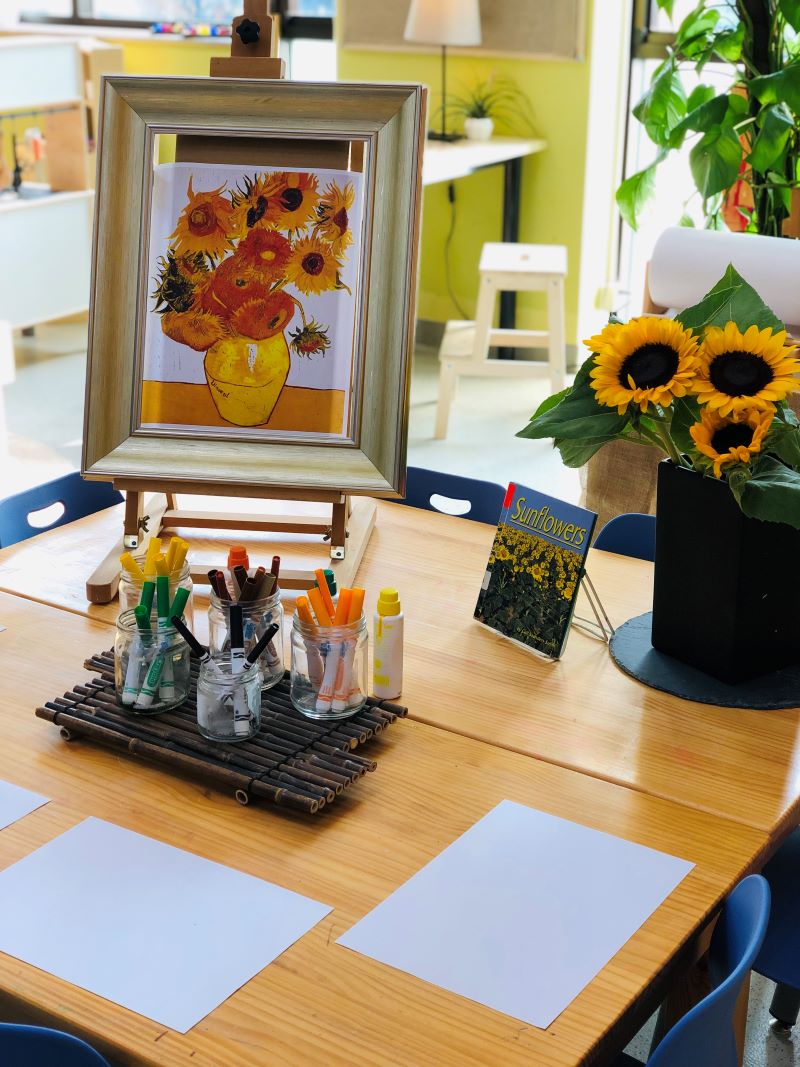
From the words of Maria Montessori, “The first aim of the prepared environment is, as far as it is possible, to render the growing child independent of the adult”.Nature and a child’s environment are viewed as key elements in many educational philosophies. From outdoor labs and kindergartens, to the philosophies of Montessori, Waldorf and Reggio-Emilia, children thrive and learn the natural rhythms of life from the world around them.
There are many teachers in a child’s life, and they can be sorted into three categories: adults, peers and the environment. Many times the child’s surroundings are overlooked as a source of learning and interaction. The environment is termed “The Third Teacher” by Loris Malaguzzi, founder of the Reggio Emilia approach to learning, and used by educators all around the world. This Third Teacher encompasses the spaces in which children learn, both indoors and outdoors. The significance and thoughtfulness of the materials within those spaces, as well as the feel and mood of the environment, are essential to driving the development of the child. Each element has an important role in encouraging exploration, inquiry and play, as well as fostering a child’s inherent ability to seek and foster their own knowledge.
No matter where you teach, what you teach, or the age of children you teach, from preschool to adolescence, you as an educator can take simple steps to thoughtfully prepare an environment that encourages inquiry, play and development. By focusing on the areas of space, materials and mood, children can feel confident, comfortable and capable in embracing their own learning to construct knowledge for themselves.
Space
The term space can take on several meanings within the context of The Third Teacher. It is the physical environment in which children are present and learning. It is also the ability to expand, to grow and to move around while following the children’s interests. In an inquiry and play-based approach, children need their environment to evolve and change with them. As their interests and content changes, and as children grow through developmental stages and grade levels, the physical environment must fluctuate to accommodate their learning.
Envision preschoolers building with blocks and tracks. As they create, they need ample space to construct, often leaving the building area and expanding out into other areas of the classroom. Furniture, materials and peers can all accommodate this exploration by providing space. In a primary or secondary school environment, the children may be exploring earth sciences through planting. Be it indoors or out, children, seeds, soil, water and light all need space.
While many classrooms are large enough to accommodate interest areas and learning provocations, smaller rooms require the educator to get creative in the preparation and use of the space, potentially through the use of walls or ceilings. Writing and art can be inspired by play and can take place anywhere. With the use of caddies or carts, children can take the materials they need to any area of their environment to expand their learning. The building of an expansive train track may trigger a child to write a story about trains. When their story booklets and writing instruments are on a cart, they can simply wheel what they need over to their track to write and illustrate. While documenting the growth and change from seed to sprout, a second grader can easily take a caddy with their journal, tools and materials outdoors to observe and document.
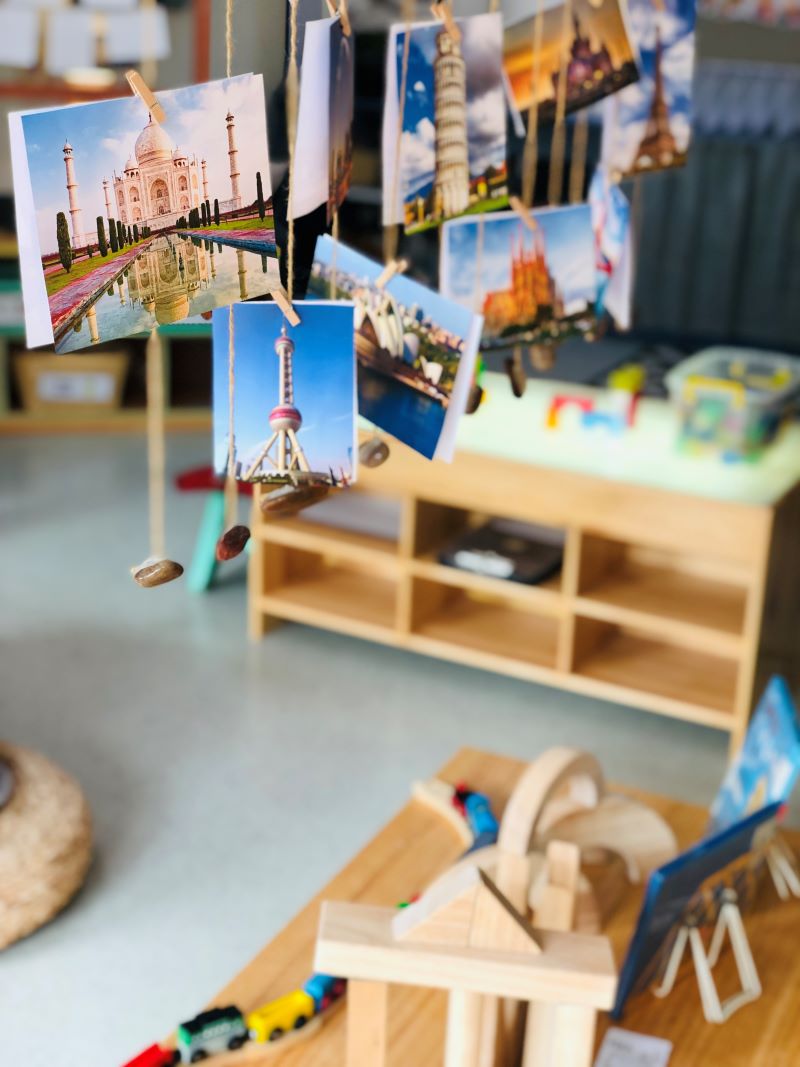
Traditionally, we picture a learning environment as a classroom, filled with rows of desks and chairs all facing forward toward the teacher and a blackboard. An environment that promotes inquiry, play and development, would look vastly different; we would see provocations, also known as invitations to learn. The environment is responsive and flexible. Children move freely through their learning environment, have choice seating and peer interactions are encouraged.
We would observe fluid spaces with furniture that can easily be moved to accommodate a change in learning. The traditional classroom has butcher paper covered bulletin boards with colorful trim and die-cut headings. The walls of The Third Teacher are a blank canvas, being filled with children’s thoughts and creations, photographs and observations. The use of borders is limited and there is ample space to document learning as it happens throughout the year.
Nature is embraced in the physical environment. Life is seen in the form of plants, natural light and even a class pet. Space can be created to bring the outdoors inside, like baskets of leaves, pails of dirt and snow, and even animals or insects (which can gently be observed and then released). Walls are light-toned, furniture is made of natural wood, materials are displayed in baskets, in jars and on trays, and the primary colors associated with traditional school classrooms are replaced by warm, natural and neutral tones.
Materials
Problem solving skills, questions and play are all promoted when the materials within a learning environment are prepared in a way that is open-ended and attractive. From math manipulatives to art instruments, the materials found within a child’s learning environment should be thoughtfully chosen and displayed in a way that is inviting and sparks creativity. While plastic teddy bear counters are wonderful tools for counting and sorting, natural materials like pinecones, glass marbles and old buttons can serve the same purpose, while adding an element of novelty and sensory development. When planning an invitation for patterning and sorting, look for color and variety in nature. Fall leaves, seeds of all sorts and rocks can be collected by children outdoors, brought inside and then explored in ways that promote numeracy and the development of their mathematical skills. In addition, the cost of natural materials is minimal, if not free.
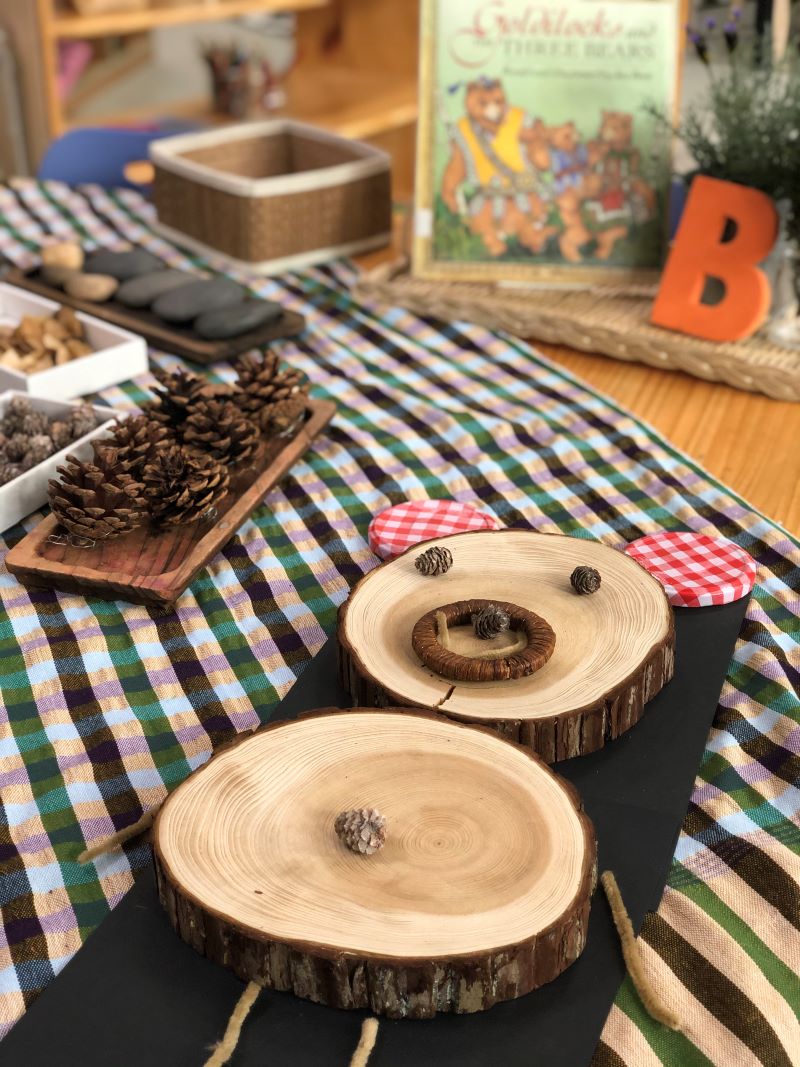
Children should always have access to authentic art materials and instruments, like watercolors, brushes, colored pencils and clay, as well as natural materials that spark inquiry. Herbs from the garden make for interesting stamps and brushes when paired with paint, and the surface of a dry river rock is a beautiful and natural canvas when brushed with water. A bouquet of flowers displayed with photos of famous works like Van Gogh’s ‘Vase with Twelve Sunflowers’ or Picasso’s ‘Mains aux Fleurs’ would surely catch anyone’s attention. When placed in the center of a table with nonfiction books about flowers, a tray of white paper and paints or markers in jars, a beautiful display then becomes an invitation to explore and to learn.
Learning materials for literacy, mathematics and the arts should always be accessible and within a child’s reach. Low shelving with jars for writing and art tools, and wicker baskets and wooden trays for sorted paper encourage children to be independent when selecting and putting away materials. Math manipulatives in ceramic bowls alongside ten-frames and whiteboards let children know that they are free to use concrete and pictorial means to support problem solving.
Mood
When you walk into a home, what is the first space that you see? Do you notice soft furniture, a warm rug, lamp light, plants and family photos? The home is a child’s first learning environment, and the living room is an inviting space that makes one feel comfortable and cozy. Why should entering a classroom learning environment feel any different?
The mood and aesthetic nature of a learning environment is a key component of The Third Teacher. The safety and protection we feel with our family at home is the same feeling a child should experience amongst their peers at school. The placement and types of furniture, as well as light, color, the touches of nature and a sense of community can all make a space feel more comfortable. When a child feels calm and safe, they are ready to learn and explore.
The learning environment should be aesthetically pleasing. An appreciation for beauty is a character trait that all children possess and it is something that we as educators can encourage. Through the thoughtful use of space and materials we can create a mood and feeling within the learning environment. The use of neutral colors and soft, natural light is a stark contrast to the often over-powering use of primary colors and florescent lighting in traditional classrooms. Paint, fabrics, texture, light and bringing bits of nature indoors will enhance the ambiance of your environment. By emphasizing windows, placing plants around the room and choosing natural and neutral tones, we can create beauty within a space.
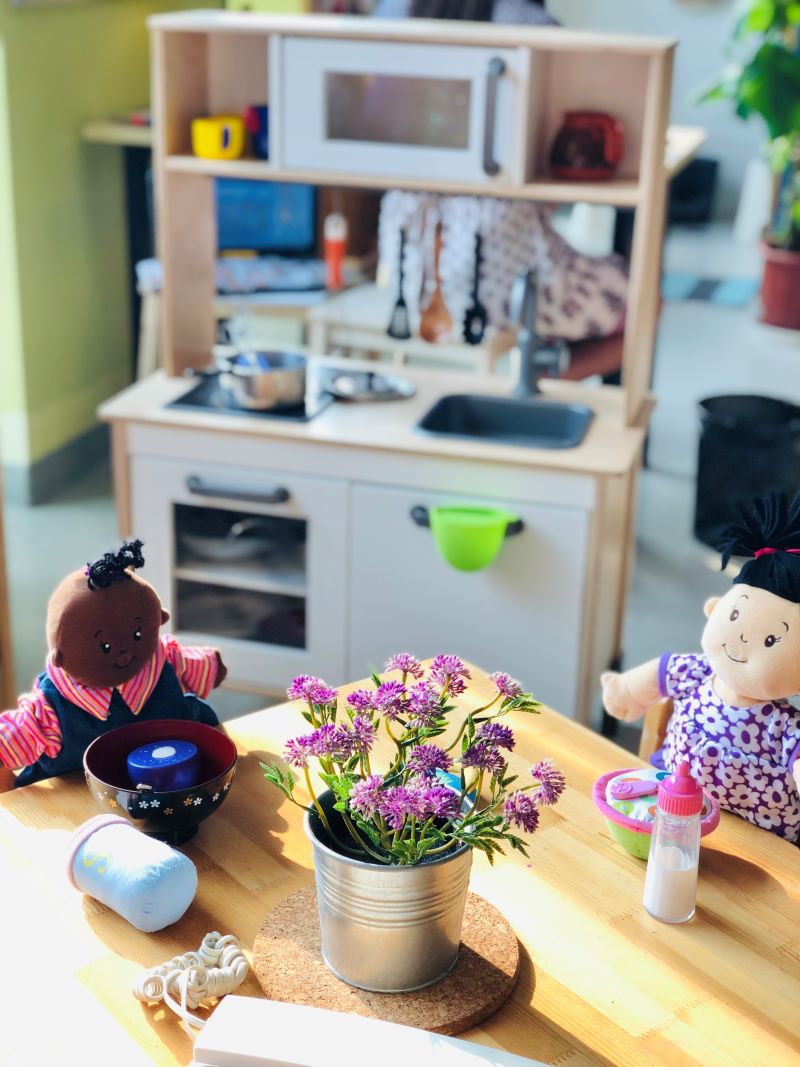
The environment should also be culturally representative of the community it serves. Having art and photographs, traditional furniture and plants that are representative of the local community will help all children to feel respected and included. Even the play food, clothing, dolls and books in the learning environment should represent the children that play with them. Like a home, photos of the children and their families should have a place. When a child sees the faces of their parents and siblings, they will feel that connection and a sense of place and nourishment.
Children are capable individuals who intrinsically want to learn and explore. When provided with a safe space and meaningful opportunities to grow, they are able to construct their own knowledge and flourish. How does your current learning environment honor your beliefs about children and learning?
Here are a few inexpensive tips to get you started in rethinking your learning environment and how you can use nature to nurture:
- Turn groups of desks inward to create tables rather than rows. This promotes social development and community within your learning environment.
- Add felt pads, old tennis balls or locking wheels to the bottom of table legs and chairs to make it easier to move items around the room, making the space more flexible to follow the children’s interests.
- Create an art cart and writing trolly with all the appropriate papers, tools and instruments so that documentation can be wheeled to the space where the learning is happening.
- If you are able, a coat of light, neutral paint on the walls can brighten up a small or darker classroom space.
- Remove borders from bulletin boards and cover them with light fabric to create a neutral and warm feel to your wall space (white or cream bed sheets from your local thrift store are an inexpensive and up-cycled option).
- Turn off a few, if not all of your overhead fluorescent lights and embrace natural light by making sure your windows are not blocked. You can also place some lamps around the room for a warmer light.
- Bring nature indoors by having plant life in your space. Place larger potted plants on the floor and on shelves around the room and small jars with plants on tables. Fresh herbs like rosemary, mint and parsley add to the ambiance and freshen up the scent of the space. Look in your garden or ask a neighbor to donate green life to your learning environment. Don’t have a green thumb? A few artificial plants can add a similar feel to your space as the living kind. Perhaps try a mixture of both.
- Place a video camera in the window or outside and project what is happening outdoors inside on a wall or curtain.
- Embrace messy play and bring the outdoors in. Natural materials make for the best learning experiences. Put dirt, rocks, snow, water, leaves and other materials in tubs or a sensory bin for children to touch and explore.
- Ditch plastic storage containers for more natural items like wicker baskets, wooden and metal trays, glass jars and ceramic bowls.
- Choose a piece of art or furniture that is representative of your community to have as a focal point in your space.
- Promote community and invite children to bring a family photo to have on display, in a place that is visible and accessible to them.
Rethinking the way you prepare your learning environment to encourage inquiry, play and development through nature may seem daunting at first. When you take a step back and look at your physical space, the materials within it and the ambiance, make note of what you have and supplement with found, repurposed and donated resources and materials. Many people think that redesigning an environment means buying new furniture from big online educational suppliers or having items custom made. While those may be options for some, many teachers are on a budget and often pay for materials out of pocket. Take a look in your own basement, garage and garden, or connect with your community for donations of desired items. Your local thrift store or donation center can be wonderful places to find items to enhance The Third Teacher.
This article is available and can be accessed in Spanish here.


